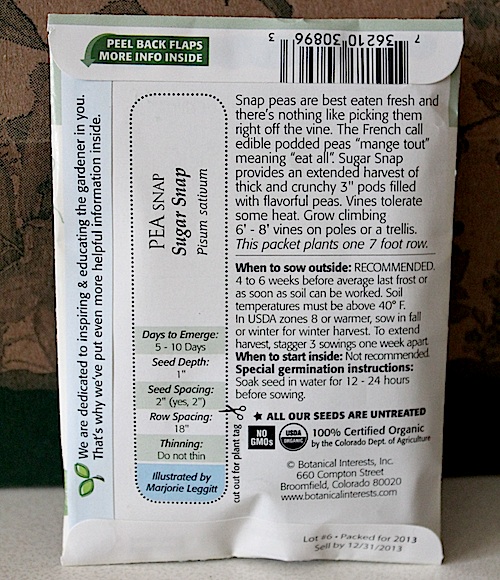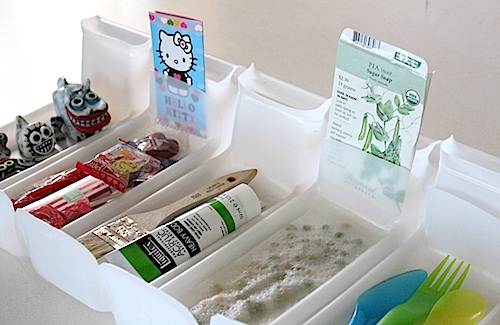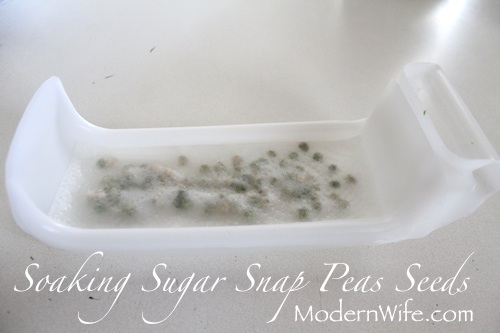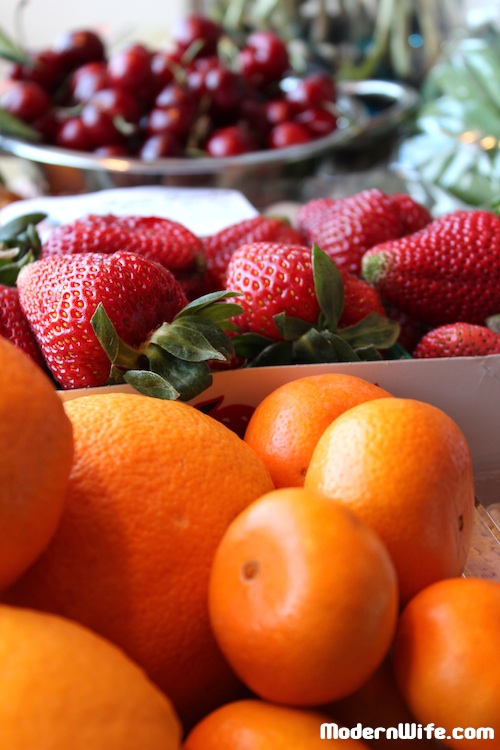 Sometimes I find myself in a rut, buying the same fruits and vegetables week by week. Not only is this boring to eat, it also provides a limited range of vitamins and minerals for me and my family. It might be easier to take a multivitamin pill, but so much more effective and enjoyable to eat nutritious foods. So I did some research on essential vitamins and minerals our bodies need to be healthy, as well as the best food sources for these.
Sometimes I find myself in a rut, buying the same fruits and vegetables week by week. Not only is this boring to eat, it also provides a limited range of vitamins and minerals for me and my family. It might be easier to take a multivitamin pill, but so much more effective and enjoyable to eat nutritious foods. So I did some research on essential vitamins and minerals our bodies need to be healthy, as well as the best food sources for these.
Vitamin A promotes vision in dim light, mucous membranes, bones, teeth and skin. Carrots, pumpkin, sweet potatoes, spinach, butternut squash, cantaloupe, mangoes, apricots, broccoli, watermelon, tuna.
(Vitamins B)
Thiamin keeps carbohydrate metabolism and nervous system in good condition. Pasta, peanuts, legumes, watermelon, oranges, brown rice, oatmeal, eggs.
Riboflavin takes care of the skin, and fat / protein / carbohydrate metabolism. Milk, avocadoes, tangerines, prunes, asparagus, broccoli, mushrooms, salmon, turkey.
Niacin promotes effective use of oxygen by our cells, fat / protein / carbohydrate metabolism, and the nervous system. Peanut butter, legumes, soybeans, whole-grain cereals, broccoli, asparagus, baked potatoes, fish.
Vitamin B6 is for protein metabolism. Soybeans, avocadoes, lima beans, bananas, cauliflower, green peppers, potatoes, spinach, raisins, fish.
Folate is the same as folic acid, which is good for red blood cell tissue growth and repair. Legumes, mushrooms, oranges, asparagus, broccoli, spinach, bananas, strawberries, cantaloupe, tuna.
Vitamin B12 promotes new tissue growth, red blood cells, the nervous system and the skin. Eggs, salmon, swordfish, tuna, clams, crab, mussels, oysters.
Biotin metabolizes fat, protein and carbohydrates. Peanut butter, oatmeal, nuts, cauliflower, legumes, eggs.
Pantothenic Acid aids in the metabolism of fat, protein and carbohydrates. Whole-grain cereals, mushrooms, avocadoes, broccoli, peanuts, cashews, lentils, soybeans, eggs, fish.
Vitamin C builds collagen, healthy gums, teeth and blood vessels. Oranges, grapefruit, bell peppers, strawberries, tomatoes, spinach, cabbage, melons, broccoli, kiwi, raspberries, blueberries.
Vitamin D is good for calcium absorption, bones and teeth. Sunlight, cereals, eggs, milk, butter, tuna and salmon.
Vitamin E protects cells from damage. Nut and vegetable oils, mangoes, blackberries, apples, broccoli, peanuts, spinach.
Vitamin K prevents blood clotting. Spinach, broccoli, brussels sprouts, cabbage, parsley, carrots, avocadoes, tomatoes, eggs, dairy.
Calcium builds strong bones and teeth, muscles and nerves, and prevents blood from clotting. Broccoli, green beans, almonds, turnip greens, orange juice, milk, cheese, yogurt, salmon and sardines with bones.
Chloride aids in digestion. It works with sodium to maintain fluid balance. Salt.
Chromium assists in metabolism of carbohydrates. Whole grains, broccoli, grape juice, orange juice, black pepper.
Copper is good for the blood cells and connective tissues. Nuts, cherries, cocoa, mushrooms, gelatin, legumes, oysters, shellfish, fish, eggs.
Flouride protects the tooth enamel. Tea, fish.
Iodine promotes thyroid function. Spinach, iodized salt, lobster, shrimp, oysters, milk.
Iron brings oxygen in blood and is good for metabolizing energy. Asparagus, spinach, pumpkin seeds, soybeans, tofu, clams.
Magnesium protects the bones, nerve and muscle function. Molasses, nuts, spinach, pumpkin seeds, baked potatoes, broccoli, bananas, seafood, dairy.
Manganese is good for the bones, connective tissues and fat / carbohydrate metabolism. Nuts, legumes, tea, dried fruits, spinach, green leafy vegetables.
Molybdenum helps in nitrogen metabolism. Legumes, whole-grain cereals, dairy.
Phosphorus metabolizes energy. It works with Calcium for healthy bones and teeth. Cereals, fish, eggs, dairy.
Potassium keeps acids balanced. It also works with Sodium to maintain fluid balance. Baked potatoes, avocadoes, dried fruit, yogurt, cantaloupe, spinach, bananas, mushrooms, tomatoes.
Selenium works with Vitamin E to protect cells and body tissue. Whole grain cereals, mushrooms, Brazil nuts, dairy, fish and shellfish.
Sodium keeps the fluid balanced and the nervous system in good condition. Salt, soy sauce, seasonings.
Zinc aids in wound healing, growth, appetite and sperm production. Lima beans, legumes, nuts, oysters, seafood, dairy.












 Falafel is conventionally deep fried in oil. I prefer baking it for a lighter, low fat version of this Mediterranean classic.
Falafel is conventionally deep fried in oil. I prefer baking it for a lighter, low fat version of this Mediterranean classic.
 Sometimes I find myself in a rut, buying the same fruits and vegetables week by week. Not only is this boring to eat, it also provides a limited range of vitamins and minerals for me and my family. It might be easier to take a multivitamin pill, but so much more effective and enjoyable to eat nutritious foods. So I did some research on essential vitamins and minerals our bodies need to be healthy, as well as the best food sources for these.
Sometimes I find myself in a rut, buying the same fruits and vegetables week by week. Not only is this boring to eat, it also provides a limited range of vitamins and minerals for me and my family. It might be easier to take a multivitamin pill, but so much more effective and enjoyable to eat nutritious foods. So I did some research on essential vitamins and minerals our bodies need to be healthy, as well as the best food sources for these.